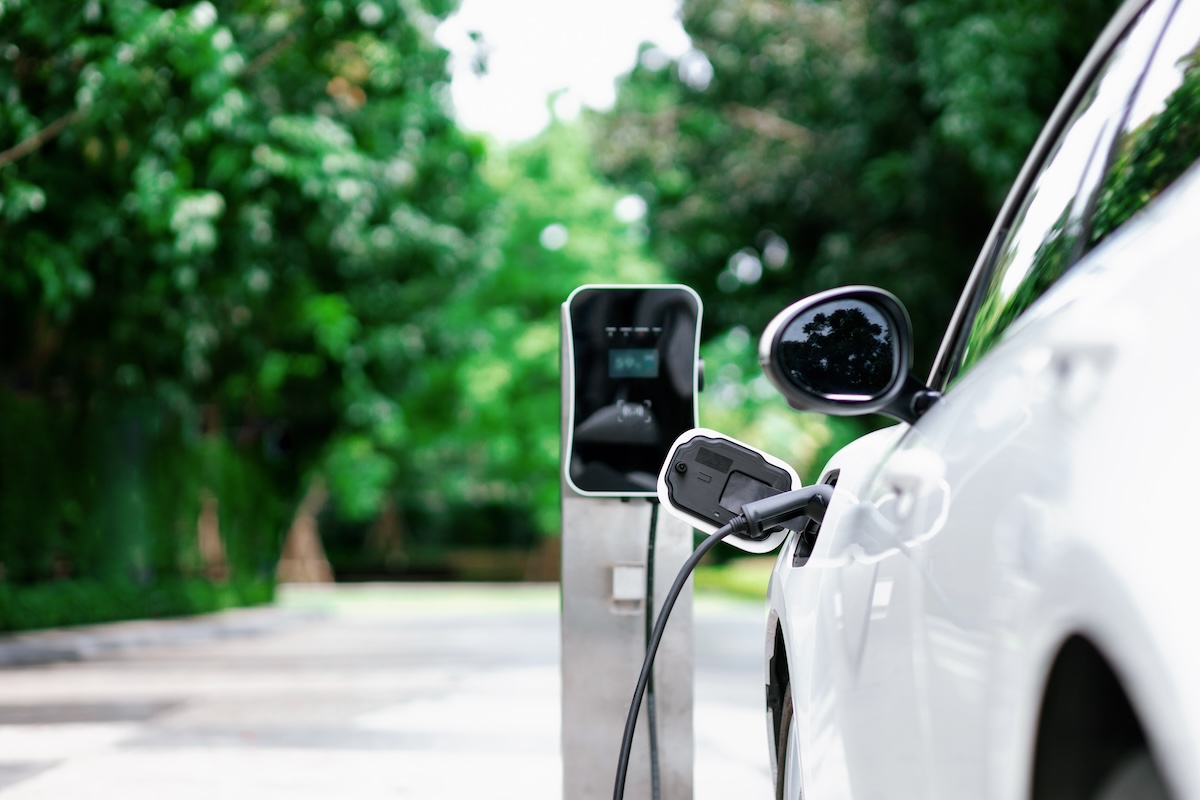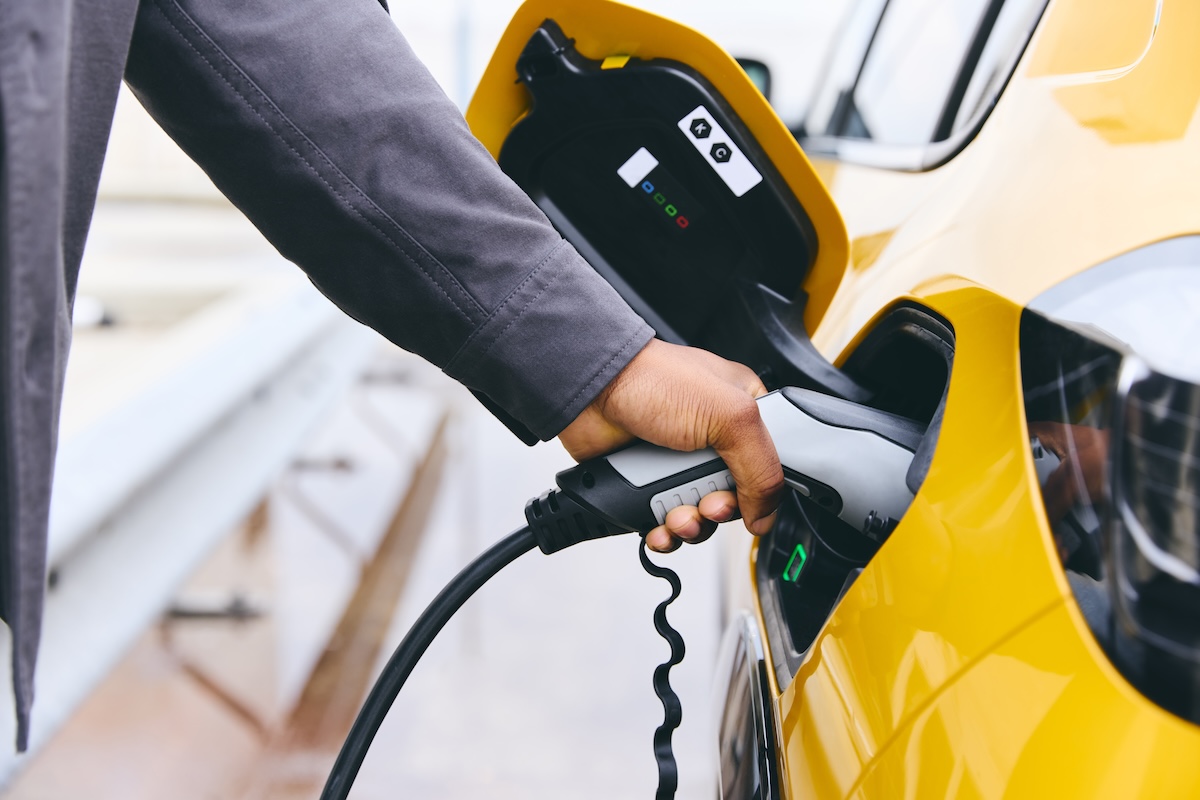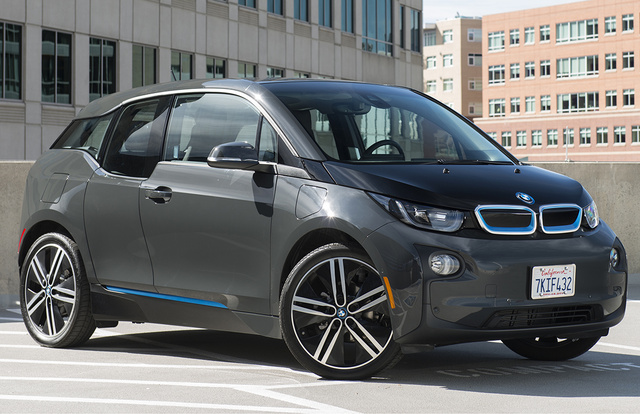While the cost of charging an electric vehicle is dramatically less expensive than filling the tank in a traditional gas- or diesel-powered car, you—caveat: usually—have to pay to charge an EV. The average price for doing so can vary dramatically depending on where you live, whether you’re charging at home, or whether you need to charge at a public charging station.
One thing is 100 percent certain: there’s no way for anyone to tell you definitively what your charging cost for an electric vehicle is going to be. The “national average cost” for electricity rates of $0.15/kWh reported by some publications is inaccurate, especially if you ever need to charge your vehicle at a public charging station. There really is no national average cost. It’s on you to figure out how much it’s going to cost. Thankfully, there are some clear indicators to help you do that.
Geographic Location

"Kilowatt hours" are the accepted charging unit for electric vehicles. The electricity rate cost per kilowatt-hour varies dramatically across the country, and even between towns within those 50 states.
In California, it costs more to charge an EV than just about anywhere in the country. There, you'll expect to charge your EV at $0.30 per kWh.
In Massachusetts, the charging rate is closer to $0.189 per kWh.
If you’re charging at home, it’s pretty easy to do the math. You multiply the cost per kWh by the kWh capacity of your vehicle. In our Nissan Leaf Plus example, with a 62 kWh battery pack, the cost to fully charge in Massachusetts comes out to $11.72 for a full charge from 0 percent capacity. In California, the cost would be $18.60. Either is going to be a whole lot cheaper than filling the gas tank, even on a comparably sized vehicle.
Note that if you have a plug-in hybrid (PHEV) with a limited range, say 35 miles or so, your cost to keep that fully charged is going to be significantly lower than charging even something like a Leaf Plus with a 62kWh battery pack. Not to mention, you'll see huge mpg benefits over a non-PHEV version of the vehicle.
Keep in mind, these costs only apply to charging at home.
Home Charging vs. Public Charging

When you charge an EV at home, with electric car charging, you’re simply paying the cost of electricity, measured in kilowatt-hours, just the way you would if you were running a home air conditioner or a pool pump. You'll see your additional cost reflected in your electric bill, rather than on your Mobil card statement. Figuring out the cost is a simple multiplication problem. The cost is the price per kWh multiplied by the kWh required to fill up your battery. In the case of our Nissan Leaf Plus, for a battery at zero percent capacity, it's $0.189/kWh X 62 (the kWh capacity of the battery).
Note that we're not factoring in the cost of wiring a 240-volt outlet and the purchase of a Level 2 charger, but those are one-time charges that are easy to figure out and amortize over the life of the vehicle.
Using a public charging station is a whole different ballgame, and how you get charged is a convoluted explanation. Some charging stations are operated by a charging system like Chargepoint, for-profit entities that are in the business to make money, just the way Mobil is when you use one of its gas stations. Some charging stations are operated by (and subsidized by) public agencies like cities and states. Tesla Superchargers are run solely by Tesla.
How electric-car owners pay for that charge is a bit of a mystery. The fairest and simplest method of charging EV owners to top up their EVs would be to charge by the kilowatt-hour and then add some kind of a service fee on top of the charging cost to provide some profit for the charging station. But, despite the fact that 30 states allow EV charging stations to charge by kWh, most don’t. They charge by the hour, instead.
The vagaries of pricing often coincide with population density. The city of Cambridge, Massachusetts, for example, has 10 public charging stations, most of which are open 24 hours per day. The city charges the standard $0.189/kWh in Massachusetts, but it also tacks on a $0.15/hour parking fee (because, as many residents will tell you, the entire city of Cambridge is a parking disaster).
The fees for using municipal charging stations can vary insanely, even by venturing just 18 miles west of Cambridge. In the one-horse town of Holliston, Massachusetts (where this is being written), the local water department has two Nissan Leafs and two charging stations at the town hall. We've asked to charge electric vehicles using those chargers, and the folks at the town hall have been happy to oblige. As long as the chargers aren’t plugged into the two Leafs that the water department uses, we can typically park there overnight. There’s no charge to use those outlets at all. This likely isn't the case in many, more densely populated areas—municipal water departments can't have residents constantly hogging their charging stations—but it is an example of how some smaller governments can help make EV ownership more enticing.
Fast Charging Equals a Higher Rate

Level 3 chargers, known as DC Fast Chargers, or in Tesla's case, Tesla Superchargers, are quick and convenient. They're generally located close to highways, shopping centers, or interstate service centers, and they can get you from zero to a full charge (and back on the road) in about 90 minutes.
They also cost more to use than a Level 2 charger, partly because the equipment is so expensive. Where a Level 2 charger might cost $500 to $700, a Level 3 charger can cost $50,000, and require commercial-level power generation to make it work. As a result, you're going to be charged more per kWh in the 30 states that allow public charging to be billed by the kilowatt-hour.
Finding out how much a Level 3 charging costs is like taking on a part-time job. The answer is "it depends," and that answer depends on a multitude of factors including how the provider charges for the service.
Say what you will about Tesla, but the Tesla model is pretty much the only game in town that consistently charges by the kilowatt-hour in the states that allow it. Just about every other charging station is going to vary in how it charges the consumer.
Despite the fact that Massachusetts is one of the 30 states that allows providers to bill by the kilowatt-hour, electric vehicle charging suppliers such as EVgo still charge by the minute for Level 3 charging, which makes it nearly impossible to compare costs to Level 2 stations that charge by the kWh.
Choosing when to plug into a Level 3 charger can make a big difference when it comes time to pay. In Massachusetts, the Level 3 chargers operated by EVgo charge at $.30/minute. But most chargers throttle down the rate of charge once the vehicle's battery has hit 80%. Plug in when you're close to zero, and you stand to maximize the amount of charge you get at that $.30/minute rate. Plug in at 75%, however, and you'll still pay $.30/minute for much slower charging.
Charging Networks

Charging networks are confusingly called “public,” because anyone can use them, but they’re “private” in the sense that they’re privately held, for-profit entities.
Chargepoint is the biggest charging network in the country. It’s based in California but currently has 114,000 locations worldwide, with 30,000 here in the United States. Within five miles of our little town, there are two public, openly available Chargepoint locations. Like everything else involved with EV charging, Chargepoint has an app that makes finding locations easy and helps with things like managing your account, tracking how much you’re spending, and compare the cost of home and public charging.
You pay a fee at Chargepoint locations, which you can either initiate using a Chargepoint card, or with your smartphone.
What makes this confusing is that Chargepoint does business with dozens of other, smaller charging networks like EVgo, EVBox, flo, and Greenlots. With a Chargepoint account, you can charge at any of these, but prices between different chargers will vary. For instance, two locations may seem similar—they may be close by each other, they may both be public, they may both be listed on the Chargepoint app—but they may have different price estimates. It's not uncommon to see one with prices set by a property manager and another, say at a public library, with totally different pricing.
Sure, we’re all familiar with different gas stations charging different prices, but if those prices vary by $.25/gallon it’s surprising. Different EV chargers can vary by as much as 90 percent, which can make it feel exceedingly difficult to figure out the most cost-effective way to charge an EV.
The Apps
Like everything from your favorite music streaming service to your new smart dishwasher, everything comes with an app now.
Be careful, when you have an EV, you may feel like you're going to go app-blind because every single entity involved in the process provides an app for you to mess around with: The manufacturer of the car you purchased, your electric company, the Level 2 charger you purchased, and the charging network are all going to provide you with an app, all of which do essentially the same thing, but in a different way.
Your best bet is to start with the app that came along with your car. It’s going to offer the most robust functionality, allowing you to actually control some of the features on your car, including what time of day you want your car to charge. Where these apps may fall a bit is charging locations, but in our experience, they offer a relatively accurate picture of the public charging stations nearby, making the app from the charging network almost irrelevant.
The manufacturer’s app also provides charging timers that only charge at off-peak times, making the apps from your electric company and your smart charger redundant.
Like everything else, figuring out the costs of charging an EV will likely be a learning process.



